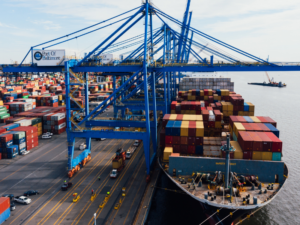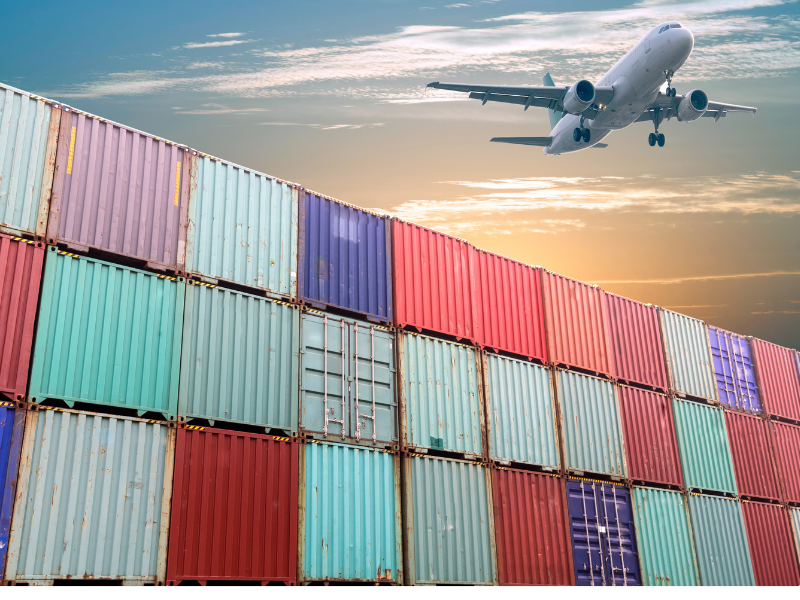When shipping items overseas and domestically, air freight and sea freight are two of the most common methods of transport available. So, which is better? And beyond just the mode of transportation, what is the difference between air and sea freight?
This guide will outline all differences between sea freight and air freight, as well as considerations to keep in mind when selecting your next shipping method.
First Things First: Costs
Freight is often the most significant factor for many companies in considering supply chain costs. Any business wishing to operate on an international or even national scale will need to be aware of the ins and outs of freight conventions and costs that are going to impact their bottom line. Duties, GST, storage charges, inspection charges, demurrage charges, and many more are all contributing factors to shipping costs. Pricing consistently affects all major business decisions, and choosing a preferred freight method is no different.
Air Freight Vs Sea Freight – Which Is Cheaper?
Sea freight is undoubtedly the leading option if the price is the only factor considered. Air freight can be 12-16 x more expensive than sea freight in some instances. However, this is only the prelim answer; costs can vary depending on the requirements of your freight and business.
When it comes to sea freight costs, the critical calculation for the shipping rate depends on whether you’re shipping via LCL (less-than-container load) or FCL (full container load). LCL shipments are charged by the volumetric weight. An FCL Shipment involves renting the whole container and is often a flat fee regardless of how much space is used within the container. When transporting items above a certain weight and size, paying for an LCL shipment becomes uneconomical, as an FCL shipment saves you more on cost per volume shipped. Like any charges, rates fluctuate. When working with a shipping partner like Freight Match, you’ll be kept informed on whether your shipment costs are optimised through LCL or FCL.
Another financial cost to take into consideration for both methods is any insurance premiums for your product, as the pricing between sea freight and air freight can vary dramatically.
As the guide below will expand on, the price difference between air and sea freight will, in many cases, be in favour of sea freight. Shipping anything via sea freight will invariably take much longer, but as the potential volume of goods moving by sea is much larger, there is a better economy of scale offered, leading to lower prices.
Price is only one contributing factor; there are many others to consider when comparing the difference between air and sea freight.

Air Freight Vs Sea Freight: Other Considerations
-
Time

When time is not of concern, shipping via sea freight will be the most cost-effective method to send your consignments. Your parcels, documents, or freight will travel in a secure, sealed shipping container.
Many sea shipments can take around up to a month to arrive, while an air shipment takes a matter of days. For many Australian businesses, speed is crucial. In this case, air freight is going to be the more appropriates solution.
-
Reliability

While sea and air freight can be affected by unforeseen circumstances, sea freight generally sees the most impact from poor weather or industrial action. Flights do experience delays due to weather; however, airlines operate on a much more frequent schedule, with flights from major cities throughout Australia and the world.
It is not uncommon for ships to be out of line with their schedule, and whilst this may only be a day or two, it can have serious repercussions along the supply chain, affect the operations of the average business awaiting delivery. Missing your cut-off for a sea freight shipment can cause massive delays. When it comes to the reliability of your parcel simply arriving, the difference between sea freight and air freight is minimal, both methods operating with almost 100% accuracy, air freight maybe more so.
-
Obligations to the Buyer

If you are a business that makes shipping obligations to the buyer at the point of sale, this while likely influence your requirements for selecting your freight option. If your buyer requires their product before a specific date, you may need to ensure the fastest freight option is taken – air freight.
-
Load Capacity

One of the most significant advantages of choosing sea freight is that you can ship heavier and bulkier cargo much more effortlessly than air freight. Air cargo is typically used to transport cargo more easily unitised. When the size of your cargo becomes bigger, or when shipping higher quantities, costs become more significant by air, and often sea is the more practical option.
Air freight also comes with a long list of prohibited items that cannot be transported in plane holds as they are deemed to be hazardous. With air freight, you are banned from shipping the following:
- Articles that contain gases (Lightbulbs).
- Anything that is flammable (Perfume and aerosols).
- Toxic and corrosive items (Batteries)
- Magnetic items
- Biohazard risks (untanned hides).
- Chemicals
This list forms part of a key difference between sea freight and air freight, as these restrictions for air freight, depending on your business, could make sea freight your only choice.
-
Security

When shipping anything via air freight, there are far fewer instances where the package can be handled during transit or be subject to any unnecessary tampering. This lowers the product’s chances of damage or loss before reaching its recipient. Items or documents sent via sea, due to the longer time it takes to send the items, are at a far more prolonged risk of damage, as well as time spent at the ports or during unloading. Ultimately for both methods, it falls on the individual to ensure that items are correctly packed and protected for shipping.
-
Carbon Footprint

Across the world, international bodies, governments, and individuals are taking increasing responsibility for their impact on the environment. Even smaller businesses are taking into consideration how they can be more sustainable throughout packaging and distribution. The effect this will have on businesses is starting to be seen now, too; not having any ‘green’ policies in your business plan will lose you customers.
When comparing gross tonnage carried, emissions from ocean freight are minuscule compared to air freight. Many policies are coming into effect to make sea freight even more environmentally friendly. However, this needs to be taken into consideration on a case-by-case basis. Despite it being better for the environment to be shipped via sea freight, many products need to be delivered promptly, such as sensitive pharmaceutical goods.
Let Freight Match Help Your Decision Today

Freight Match will provide the most suitable solution when determining how to transport your next shipment. Whether by land or sea, with Freight Match, you will have access to a vast network of freight suppliers using our platform. Each time you wish to transport something, you will be offered the best solutions with competitive prices that are adapted to the type of freight you are willing to transport. All the factors listed above can be considered when shipping your product.
What sets Freight Match apart from other providers is the types of special delivery services we offer. With 3-hour delivery options, same-day delivery and VIP delivery, you can expect the most reliable service from suppliers who are experienced in transporting all kinds of freight.
